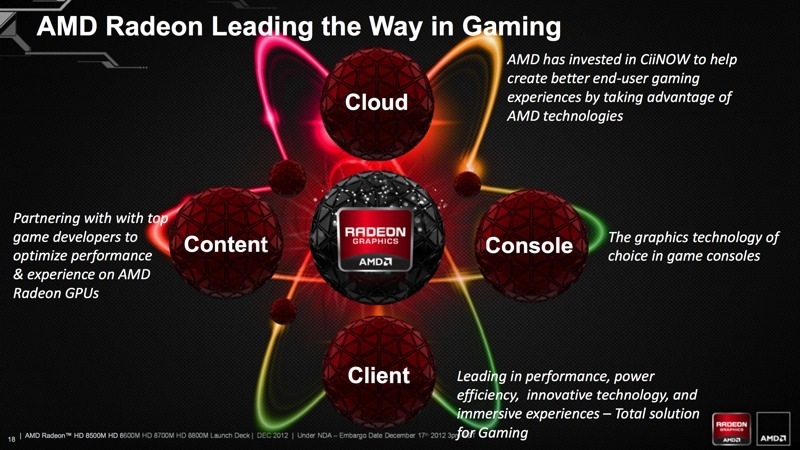From SemiAccurate:
About Amkor Not related to MS Also About Amkor related to delay, there is no relation at all
Latest Karak guy said:
http://www.neogaf.com/forum/showpost.php?p=46003454&postcount=296
So I am searching for another TSMC partner for 2.5-3D other than Amkor.
Amkor seems don't have very optimistic roadmap anyway,
Then there is Xilink and Altera and booth interesting in its own way
It seems TSMC Promoting own Cowos method (Joint venture with Altera)
Before We see The Altera TSMC let we see Xilink.
Xilink 2.5D below show how Amkor are add as added Process, for Attach & Asembly,
http://www.xilinx.com/innovation/research-labs/keynotes/3-D_Architectures.pdf
I think the big Differences with Altera + TSMC are they Bring All 2.5D/3D as process at TSMC itself, (more explanation below).
*) Also look at the Chip date 201143, it is 201143 (they Already tested that on 2011 week 43) , and the news just broke out at March 2012 (The News is 6 Month after it)
Ok To tied up that info ,this complete article will bring some fantastic explanation, i will highlight the important thing.
http://www.eetimes.com/electronics-...TSMC-develop-heterogeneous-3D-IC-test-vehicle
I agree, looks like TSMC can do SI now as it's been tested in house while GF looks to be following TSMC. Karak mentioning AMKOR would not impact MS implies Microsoft is using TSMC.
I already caught that and have posted a question for Karak to expand on this.
Another interesting line of inquiry would be the HWinfo.com information that confirmed Thebe and Kryptos and allowed Charlie to confirm from the departing AMD CEO the name Thebes for AMD-Sony and the "rumors" from Sweetvar26 that the Microsoft-AMD project name was Kryptos and write his article.
HWiNFO64 is a professional hardware information and diagnostic tool supporting the latest components, industry technologies and standards. HWiNFO64 is designed to collect and present the maximum amount of information possible about computer's hardware
These appear to be new hardware by AMD that the software can report on. Posted Oct 8, 2012 which likely means it exists in some form BEFORE Oct 8, 2012.
Added AMD
Sun, Neptune, Ibiza, Cozumel, Kauai, Hainan, Curacao, Aruba, Richland Devastator/Scrapper,
Thebe, Kryptos, Samara, Pennar.
http://www.afterdawn.com/software/version_history.cfm/hwinfo64 said:
Changes for v4.06 Build 1740 Beta - v4.05 Build 1745 Beta
Enhanced sensor monitoring on ASRock Z77, Z75, H77, B75, Q77, H71M and A75 series.
Minor bugfixes and improvements.
Driver management tool removed from package. Functionality moved into Configure section.
History file removed from package. Available online in the News section.
Help file replaced with on-line help (forum).
Embedded all supplemental files (DAT, drivers) into the main EXE file.
Reduced package content to 2 files only (EXE, INI).
Added reporting of GPU VDDC for later AMD GPUs.
Enhanced sensor monitoring on Gigabyte F2A85 series.
Added preliminary support of Nuvoton NCT6791D sensor.
Added AMD Sun, Neptune, Ibiza, Cozumel, Kauai, Hainan, Curacao, Aruba, Richland Devastator/Scrapper, Thebe, Kryptos, Samara, Pennar.
Added reporting of SATA AHCI/RAID controller and per-port information under PCI host device.
Fixed reporting of current memory clock on AMD Trinity.
Sun is a Mobile GPU that does not show up on the current AMD release roadmap below but is listed in HWinfo.com while the following are not. This means it is in advance of the following but is listed as coming later. I would guess it's in next generation game consoles.
Neptune is a 8870M .992Tflops Uses GDDR5 256 bit (is part of the 8800M series)
Sun XT is a 8970M unknown Tflops Uses GDDR5 384 bit (8900M series is not listed anywhere)
From timing the above two Mobile GPUs could be in next generation.
Custom or off the shelf, Mobile clock speed or faster in a console without battery concerns? As far as HWinfo.com is concerned it just has to report using the same internal registers and microcode as Sun and Neptune.
Posted Oct 8, 2012 and listed in HWinfo.com means AMD released this information but does it mean the designs are finalized, probably. Yields acceptable, I don't know. Can someone answer this?
It's another confirming data point for Sweetvar26. Jaguar CPUs in the APU/SoC and using LPM silicon as is the discrete second GPU in the speculated APU + GPU.
Total Tflops about min 1.3 to what ever APU (guess .4 Tflops)+ GPU totals and it likely can have clock speeds faster than would be in a notebook or laptop.
For Kryptos and Thebe they are likely CUSTOM SoCs of Samara/Pennar which are also listed in HWinfo.com but do not show up on Current AMD roadmaps (Kabini/Tamesh is the nearest Jaguar APU that is listed)





